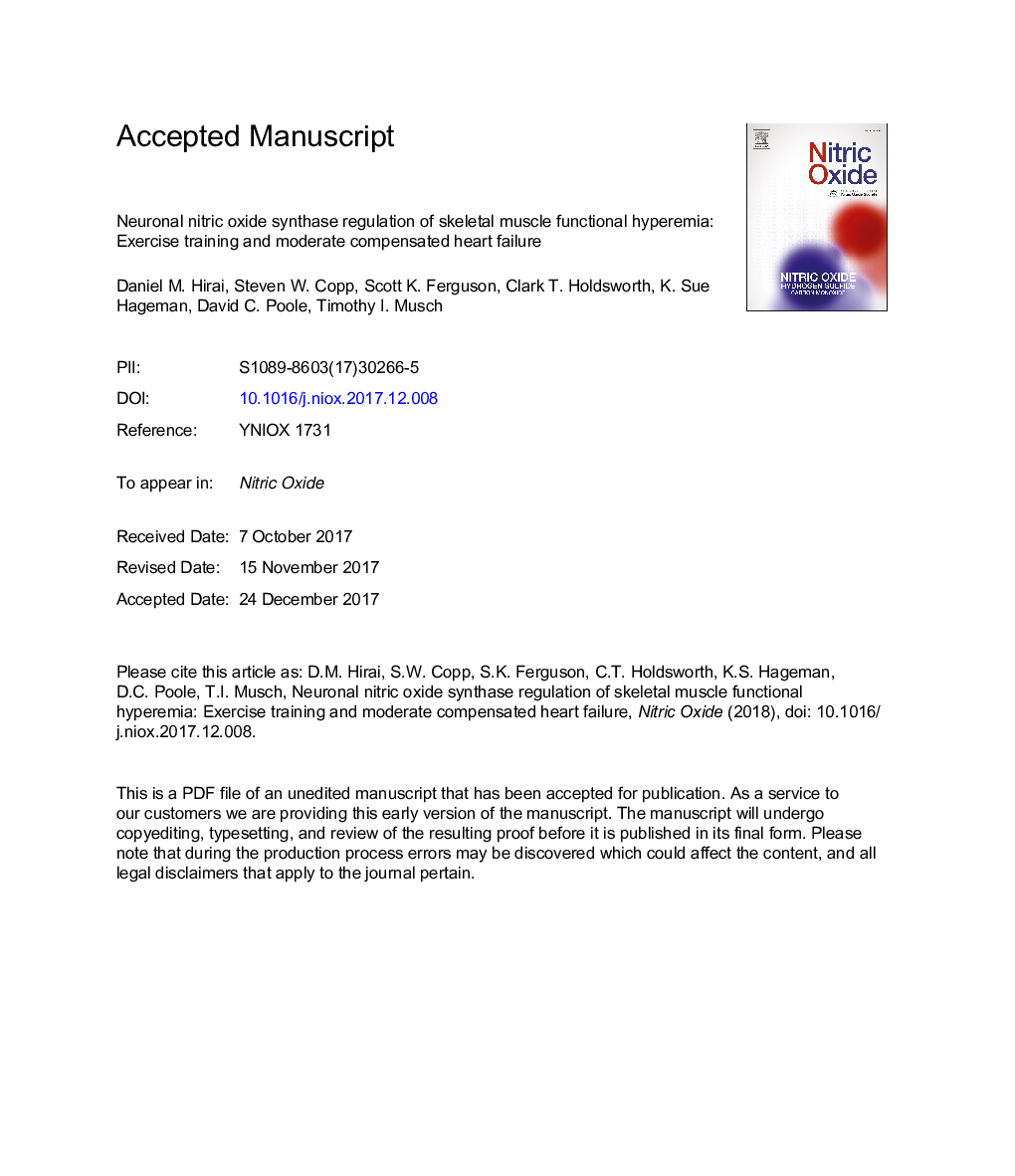| کد مقاله | کد نشریه | سال انتشار | مقاله انگلیسی | نسخه تمام متن |
|---|---|---|---|---|
| 8344643 | 1541586 | 2018 | 35 صفحه PDF | دانلود رایگان |
عنوان انگلیسی مقاله ISI
Neuronal nitric oxide synthase regulation of skeletal muscle functional hyperemia: exercise training and moderate compensated heart failure
ترجمه فارسی عنوان
تنظیم نیتریک اکسید سنتاز عضلات اسکلتی هیپرلیمی عملکردی: ورزش تمرین و نارسایی قلب متوسط جبران
دانلود مقاله + سفارش ترجمه
دانلود مقاله ISI انگلیسی
رایگان برای ایرانیان
کلمات کلیدی
موضوعات مرتبط
علوم زیستی و بیوفناوری
بیوشیمی، ژنتیک و زیست شناسی مولکولی
زیست شیمی
چکیده انگلیسی
Nitric oxide (NO) modulates oxygen delivery-utilization matching in resting and contracting skeletal muscle. Recent reports indicate that neuronal NO synthase (nNOS)-mediated vasoregulation during contractions is enhanced with exercise training and impaired with chronic heart failure (HF). Consequently, we tested the hypothesis that selective nNOS inhibition (S-methyl-l-thiocitrulline; SMTC, 2.1 μmol/kg) would produce attenuated reductions in muscle blood flow during moderate/heavy submaximal exercise in sedentary HF rats compared to their healthy counterparts. In addition, SMTC was expected to evoke greater reductions in exercising muscle blood flow in trained compared to sedentary healthy and HF rats. Blood flow during submaximal treadmill running (20 min/m, 5% grade) was determined via radiolabeled microspheres pre- and post-SMTC administration in healthy sedentary (Healthy + Sed, n = 8), healthy exercise trained (Healthy + ExT, n = 8), HF sedentary (HF + Sed, left ventricular end-diastolic pressure (LVEDP) = 12 ± 1 mmHg, n = 8), and HF exercise trained (HF + ExT, LVEDP = 16 ± 2 mmHg, n = 7) rats. nNOS contribution to exercising total hindlimb blood flow (ml/min/100 g) was not increased by training in either healthy or HF groups (Healthy + Sed: 105 ± 11 vs. 108 ± 16; Healthy + ExT: 96 ± 9 vs. 91 ± 7; HF + Sed: 124 ± 6 vs. 110 ± 12; HF + ExT: 107 ± 13 vs. 101 ± 8; control vs. SMTC, respectively; pâ¯>â¯.05 for all). Similarly, SMTC did not reduce exercising blood flow in the majority of individual hindlimb muscles in any group (p > .05 for all, except for the semitendinosus and adductor longus in HF + Sed and the adductor longus in HF + ExT; pâ¯<â¯.05). Contrary to our hypothesis, we find no support for either upregulation of nNOS function contributing to exercise hyperemia after training or its dysregulation with chronic HF.
ناشر
Database: Elsevier - ScienceDirect (ساینس دایرکت)
Journal: Nitric Oxide - Volume 74, 1 April 2018, Pages 1-9
Journal: Nitric Oxide - Volume 74, 1 April 2018, Pages 1-9
نویسندگان
Daniel M. Hirai, Steven W. Copp, Scott K. Ferguson, Clark T. Holdsworth, K. Sue Hageman, David C. Poole, Timothy I. Musch,
